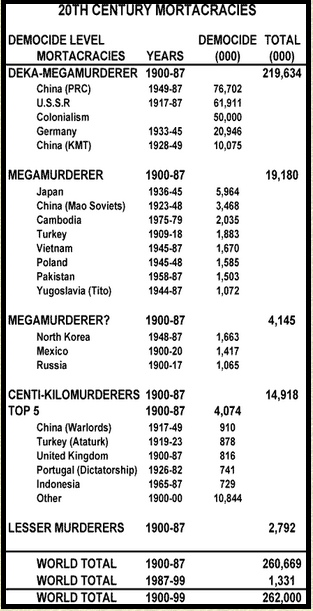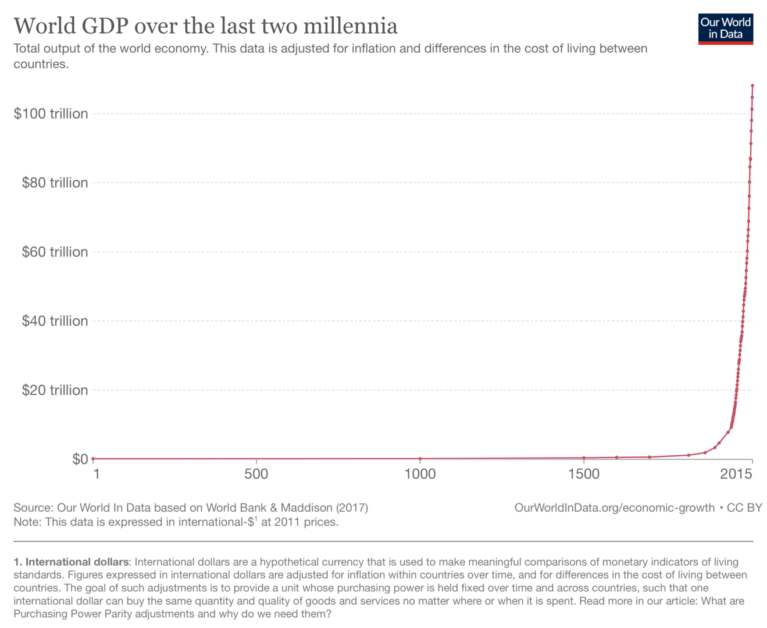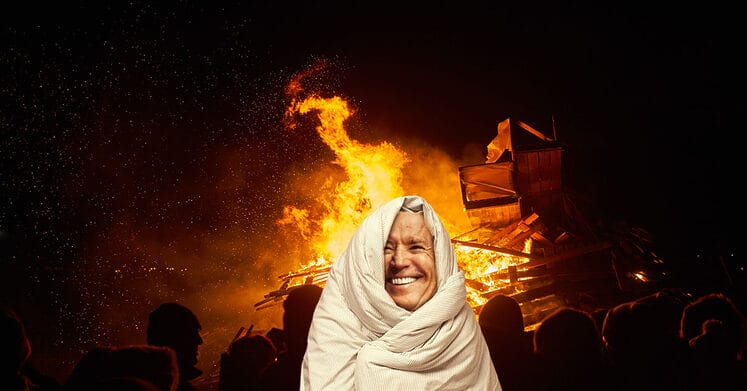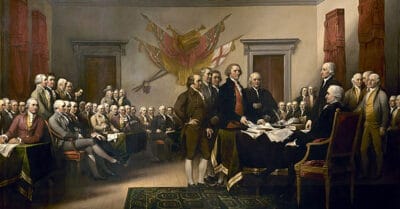
I’ll never forget the first day of the spring semester of my sophomore year of college in 1981. It was the same day, coincidentally, that President Ronald Reagan was inaugurated for his first term. I voted for Reagan in that first presidential election I was old enough to vote in and was delighted that Jimmy Carter was history.
Speaking of history, that first day, I had a class called “Western Civilization” or “Western Civ” for short. My professor, a brilliant man named Dr. Wozniak, lamented that civilization “as we know it was doomed” with Reagan taking office.
Later that day, I had the first session of my macroeconomic class, or “Macro 101”, my professor was obviously delighted that Ronald Reagan was taking office, saying something to the effect that “the grownups were taking charge”.
Those were two of the most important classes I ever took, and for different reasons. The history class was fascinating. I read the 3-inch thick textbook cover to cover, attended every lecture (and Dr. Wozniak always gave us outstanding lecture notes outlined on the blackboard). I learned of the richness of Western Civilization and that class sparked a lifelong interest in history and a deep appreciation for the amazing civilization I live in.
In the economics class, more importantly, I grew to understand how economics worked – supply and demand, free-market capitalism, money and banking, and the role of government in the economy. As a child of the 1960s and 1970s, I was a bit of a “hippie” with the leftist views that come with being a hippie.
Once I learned in that economics class just how much of the US government budget consisted of “transfer payments” – where government takes from one person via force to give to another person – I was cured of leftist ideas then and there and became the lifelong conservative I am today. (And that was back in the 1980s! Government spending is so much worse today.)
One lesson that resonates is this: the difference between free-market capitalism and socialism is so plain, so self-evident, so stark, and so clear that I shouldn’t even have to write about it. Every rational, thinking person should embrace free-market capitalism and reject the immoral ideas and perverted values of socialism out of hand.
Alas, this is not so in our world today. Maybe it’s because they don’t teach “Western Civilization” or “macroeconomics” in universities anymore.
Free-Market Capitalism
In my essay The Pillars of Modern Life, I define free-market capitalism as follows:
“Capitalism describes that socio-economic system which is based on the protection of private property rights; free exchanges between individuals and individual (or corporate) ownership of the means of production. Capitalism includes the freedom for individuals to succeed or fail. The individual owns the fruits of success and pays the costs of failure. Capitalism includes the idea of “creative destruction”, where old, inefficient and outmoded products, services and companies go out of existence in order to make way for new, innovative and more efficient products, services and companies. Capitalism is the only moral socio-economic system that has proven to promote human flourishing through the course of history.”
Modern capitalism grew out of the economic society of Renaissance Europe, particularly the great commercial cities of Florence and Genoa. Based on the concepts of private property and free exchange, the great commercial houses of Italy, England, France and the Netherlands were formed and became the basis of our modern economy.
Because funding a ship or a voyage or constructing the plant necessary to produce goods is often more than one person can afford themself, groups of people would get together and form “stock companies” to pool their resources, sharing the risk and reaping the rewards. The “East India Company” is an example of this. Modern banking, contract law and commercial processes grew out of these times.
When Adam Smith wrote The Wealth of Nations in 1776, he was not proposing a new economic system, he was writing about an existing economic system. The basics of the economic system that we enjoy today in the Western world had already been in existence for centuries.
And what has capitalism done? In the first century of our country’s existence, we had an economy that was as close to pure free-market capitalism as you can get. And the results were there: in the years from 1800 to just before the Civil War, U.S. GDP grew by 73%. After the Civil War until World War Two, per-capital GDP in the U.S. grew by a further 106%. This age was called “The Triumph of Capitalism” in the book Capitalism in America: A History.
Sadly, with the growth of the “progressive” ideology in the early 20th century (in tandem with the growth of socialist ideology, because indeed the two are linked), our federal government started to grow into the monstrous leviathan it is today, and our amazing economic growth spurt came to an end.
The graphs below show how capitalism has improved the lives of every human on this planet over the centuries, and modern-day experiences show that as countries adopt capitalism and free their economies, their economic growth improves.
Can you imagine living on less than $1.90 per day? I can’t!
This is also known as the “hockey stick of human flourishing”. The rise in living standards is due to two of the three pillars of modern life: free-market capitalism and fossil fuels, which are made possible by the third: limited government.
Socialism
Socialism describes that socio-economic system which is based on social (or government) ownership of the means of production and centralized planning and control. Exchanges between individuals are strictly regulated and, in some cases, prohibited. Attributes of socialism include government mandates and management of key sectors of the economy, forced labor, high taxation, limits on or prohibition of ownership of private property and extensive government involvement in the economy. Socialism is antithetical to freedom and there is no way to “opt-out” – except by fleeing, which people do every chance they get.
Just as there are degrees of freedom in capitalist economies, so there are variations in the application of socialism, up to and including what I would consider to be the purest form: communism.
As I wrote in my essay “On Socialism”:
“The ideas of socialism arose in the late 18th century in response to the perceived inequities of the capitalist economies of Western Europe and the United States, the disruptions caused by the Industrial Revolution and the concepts of “equality and fraternity” that arose from the French Revolution. Various thinkers advocated for the abolition of private property, government ownership of the means of production, government direction and control of the economy, and equality of outcome (not of opportunity) for all citizens.
Through much of the 19th century, the concepts of socialism were further developed, refined and formulated by German philosopher Karl Marx to view the world through the lens of a class struggle between the “ownership” class and the “working” class. His view of the class struggle maintained that the State was run on behalf of the ownership class and was used to “hold down” workers – a view that certainly resonates with today’s Leftists, even though they are untiring advocates for government power. Marx advocated violent revolution to abolish the capitalist system and establish his “classless” system.”
“Marx and his collaborator Friedrich Engels authored the Communist Manifesto, in which the concepts of socialism are taken to their logical end – the system known to the world as “Communism”. Communism is that socio-economic order under which all the means of production are owned by the State…and society is “classless”, with distribution of goods to the public based on need and the abolition of capitalism. As evidence of the fundamental illogic of the concept, communist thought also calls for the abolition of the State – which is impossible when the State owns the means of production and is used to enforce the concepts embodied in communist society.”
What is amazing about socialism is not that it was attempted. It was – in various forms in different countries at various times since the early 20th century. From National Socialist (Nazi) Germany to the Soviet Union to China to Cuba to North Korea, socialism has been tried and proven to fail – every time. In fact, there has not been a successful socialist/communist society ever at any time anywhere. All socialist/communist countries have failed or continue to limp along, with the only economic successes coming from the introduction of free-market capitalistic reforms, as in China. No, what’s amazing about socialism is that some people still think it’s a good idea.
A popular myth in America today, as open socialists (like millionaire Senator Bernie Sanders) and open communists (like former Denver City Council person Candi CdeBaca) serve in elected office, is that socialism is not the same as communism, and because socialism is “social”, it must somehow be OK. They like to point out that countries such as the Nordic countries, Sweden, Finland, Denmark and Norway are socialist countries and that socialism works there.
There is just one problem with this belief: it is not true. None of the countries mentioned are based on socialism – they are capitalism-based economies with high taxation and generous government benefit programs bolted on. This video debunking “Swedish socialism” sets the record straight for Sweden, anyway.
Socialism, in practice, has real-world, objective results we can all look at and they are not pretty. Socialist countries throughout the 20th century and into the 21st century have shed rivers of blood and compiled some staggering body counts. In a socialist country, if you oppose the government or the prevailing ideology, you can be arrested and imprisoned in a “re-education” or a “concentration” camp. If you happen to belong to a hated group, you can even be placed – under the government’s own sovereign laws – into an “extermination” camp. The table below shows some of the body counts from (mostly) socialist countries over the years. (Some countries shown are not what I would consider “socialist”, but they were definitely not Western democracies.)

The Left wants “equity” in our society. Under socialism, that goal is achieved: everyone but a small elite is equally miserable.
Freedom vs Force
These are the two forces that are in tension in our world today: the power of freedom and the coercion of force. Free-market capitalism embodies freedom: all transactions are between willing parties. Nobody pays more or accepts less than they are willing to pay or receive. Because each party is getting something they want, both win.
Socialism, on the other hand, is Force. According to economist Milton Friedman, “The essential notion of a socialist society is fundamentally force. If the government is the master, you ultimately have to order people what to do. Whenever you try to do good with somebody else’s money, you are committed to using force. How can you do good with somebody else’s money unless you first take it away from them? The only way you can take it away from them is by threat of force. You have a policeman, a tax collector who comes to take it away from them. Whenever you use force, the bad moral value of force triumphs over good intentions.”
It is the necessity for force that is contrary to human flourishing. It is what gives us the horrible numbers shown in the table above.
When it comes to which system I want to live under, freedom and free-market capitalism is always the first and best choice. Our country is increasingly sliding into a socialist cesspool. It’s time to stand up for freedom, free-market capitalism, limited government and the fossil fuels that make our modern life possible. There is truly no other way to live.











Responses